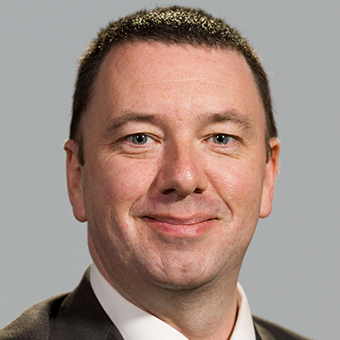Five-step plan helps ease the data burden
Posted on 25 Sep 2019
By Lachlan Pollock, Our Community
It's no secret that measuring the impact of a grants program means you will need to collect a lot of data.
But it doesn't need to be a chore. At Grantmaking in Australia 2019, participants in the "tribal gathering" of state and federal government grantmakers were treated to Dr Paul Hyland's five-step plan to help ease the process of collecting and analysing data.
Step 1. Know what you want
"The first step is to know what you want," according to Dr Hyland, a data and analytics professional with extensive federal government experience.
"You have to know what you want in precise detail."
The first place to look when creating a data collection plan is the overall strategy of your organisation.
Using this as a guide, find out what you need to know, and work out how you are going to measure it.
Step 2. Plan how to get it

Dr Hyland says many grantmakers already have a good grasp on how to design a survey. Nevertheless, he strongly recommends phoning a friend or expert to ensure you're asking respondents the right questions.
"A good survey design is art."
According to Dr Hyland, a poor survey design may leave you without the data you are seeking to find.
A poorly phrased question, incorrect terminology or an unspecified answer-style may leave your data flawed.
Rigorously planning the process from start to finish will make your data-collection focused, efficient and useful.
"If you start with the end in mind, getting there is so much easier."
Step 3. Understand what you'll do with it
Once you have a plan, it's time to go out and get your data, but data is meaningless if you don't understand what you're going to do with it.
For Dr Hyland, this is where the fun starts. It's time for analytics.
"You have to break down what you need to analyse and start digging."
For grantmakers who haven't been trained in data science, the idea of sifting through data might seem daunting. But Dr Hyland says it's best not to seek help from outside your organisation unless it's absolutely required. You might find there's more expertise within the organisation than you realise.
"If someone understands your data, that is more valuable than someone who simply knows data science."
If you need to get outside help, "Hire people who really understand what you do, why you do it, and what you want to get out of it."
"Hire people then train skills. Be prepared to invest a little bit into that."
Step 4. Understand what you won't do with it
Understanding what you'll do with the data is important, but it's only half of it.
It's also important to know what you won't do with the data.
"Data brings great rewards but can also be a liability if you don't pay proper attention to data governance," said Mr Hyland.
"Make sure you have a thorough plan on how the data will be used and safeguarded and stick to it."
Recheck your privacy policy and take great care to ensure you follow it.
Step 5. Engage grantseekers/beneficiaries
At this point, it's important that you clearly communicate your data collection requirements and expectations to grantseekers or beneficiaries - the people who will be carrying out the work that generates the data.
"At the end of the day, they need to be on board to say whether they can or cannot collect that data," Mr Hyland said.
"It's good to have robust discussions. Work through any potential issues with your grantseekers or beneficiaries to ensure everything is going to run smoothly."
Planning for the 2020 Grantmaking in Australia conference is well underway. To be the first to know when details are announced, or to be across all the latest in the grantmaking world, follow the Australian Institute of Grantmakers on Twitter.